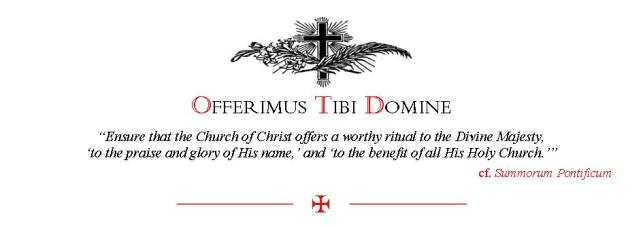From the "Telegraph" site comes news that the Cardinal in charge of the Vatican's Pontifical Council for Culture thinks too many modern churches are not built with the worship of God primarily in mind. (Biretta tip to my friend in the USA who sent me the link.) He tells of the priest who had to take his own statue of the Madonna to church because the architect hadn't bothered to include one. Incidentally, there was no statue of the Madonna in my own present church when I arrived! I've never understood why the Church has tried to imitate the buildings of the society around it in the modern age. It speaks of following the world instead of proclaiming an alternative. There was a time when the greatest of architecture was embodied in ecclesiastical buildings and because the Spirit had inspired such magnificence, the world copied the Church, so law courts, palaces and town halls looked like churches. Now churches look like supermarkets and doctors waiting rooms. How sad.
Opposition is mounting in the Holy See to a spate of recent, ultra-modern churches, in Italy and abroad, by high profile architects."The lack of integration between the architect and the faith community has at times been negative," said Cardinal Gianfranco Ravasi, head of the Vatican's Pontificial Council for Culture. "Sometimes it goes wrong."Cardinal Ravasi said a church built in 2009 in Foligno, Italy by the celebrated Italian architect Massimiliano Fuksas, which resembles a monolithic concrete cube, has been "highly criticised".In his native town of Merate in Lombardy, Cardinal Ravasi said the local priest needed to bring his own image of the Madonna to mass, because Mario Botta, the architect who designed the church, had not installed one."The problem is that in Catholicism, unlike Protestantism, things like the altar, the images, are essential, while architects tend instead to focus on space, lines, light and sound," said Cardinal Ravasi. The last architects to work closely with the church were back in the 17th century Baroque era, he added.Cardinal Ravasi's attack was backed last month by Antonio Paolucci, the head of the Vatican museums, when he spoke at the launch of a book celebrating the building of dozens of new churches in the suburbs of Rome since the 1990s.Instead of praising the churches, Mr Paolucci lashed out, claiming that: "At best, these are like museums, spaces that do not suggest prayer or meditation."Cardinal Ravasi conceded that one of Rome's most controversial new churches – Richard Meier's Jubilee Church, which resembles a yacht with spinnakers hoisted – had won over locals, but complained that "the building materials were the focus of pre-construction meetings, not the liturgical life".
Cardinal Ravasi wants to wave "Bye Bye" to some of those awful modern churches.
Cardinal Ravasi was speaking after inaugurating the Vatican's first ever art exhibit at the Venice Biennale on Saturday, which focuses on the Book of Genesis through photography and paintings by a Los Angeles artist, Lawrence Carroll, who uses melting ice in one work.Vatican officials believe the show can help heal what they call a century old "fracture" between religion and art, and Cardinal Ravasi said the Church now had its sights on commissioning modern liturgical art, for installing in churches."The Venice Biennale exhibit has been the first step on a journey," he said. "Further down the line could come liturgical art, meaning we could commission modern artists to create altars, fonts, tabernacles, lecterns, pews and kneelers," he added.But after letting modern architects push the envelope too far, the Church will keep a wary eye on liturgical art commissions, he said. "We will need to build up dialogue with artists before we commission any liturgical art," he said.
The interior of the "church". Building a church that takes no account of what is to happen inside it would seem to rather defeat the purpose of the whole venture.













4 comments:
Dear Fr.
After looking at these photos, all I can say is: "No Comment".
May God preserve us.
I can appreciate the Cardinal’s comment about where the concerns of some architects lie – in appearances. Many years ago in a large and growing parish outside London a new church was built on the periphery where new housing estates were going up. The intent at the time was that the parish would be split into two. It didn’t happen while I was there (it was the 1960s) and I suspect it hasn’t happened since - given the drop off in attendance in the interim.
A corridor linked the church to the new rectory. Halfway down the corridor there was a set of double doors. Attempting to gain entry through them, I found that there was no means of opening them from the outside…
I asked the architect why there wasn’t an external lock so they could be opened from the outside. His response was that it would “spoil the look” and would be “out of balance” with the door to the church proper, which only opened from inside!
That told me a lot about architects. Who knew that a 2” diameter Yale lock could cause such a catastrophic architectural imbalance?
Has anyone seen the Cathedral in Los Angeles?
Thirty years ago when I lived in the Archway a guest said to me "Wjat is that revolting new building, it looks like the elephant house in London Zoo" - and I had to tell him that it was a Catholic Church!
Your take on Gaudi?
Post a Comment